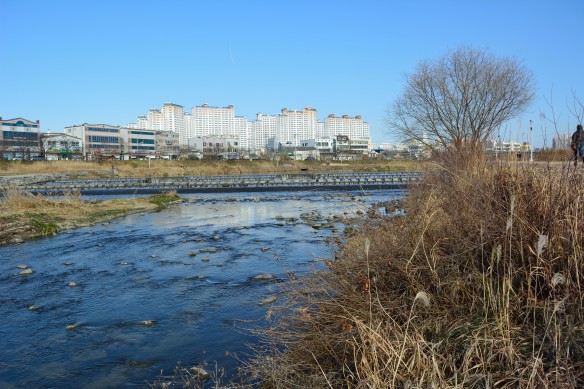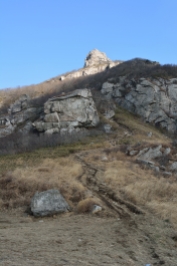Since the February intake will soon arrive in Korea, we thought it would be appropriate to share our thoughts about what to pack – and what to leave behind – when you’re preparing for a stint as an English teacher in South Korea.
There’s not much point in us making an inclusive list of things to pack, as everyone has their own needs an packing schemes. However, here are some things to consider.
1. Korea has four seasons: pack accordingly. The winter does get cold, but it is also wet. You can buy winter jackets and such here, but they are often made of lower-quality fabric. If you already have a decent, warm winter jacket at home, consider bringing it along (if you have space).The summer is HOT and HUMID. Ladies: consider bringing your thick-strapped tank tops and skirts. You won’t likely be permitted to wear shorts at school, but they will be useful on your own time. Ladies: Korea’s not keen on cleavage. Be prepared to cover up (like up to your collar bone), at least at school. Some of my perfectly-acceptable-for-work shirts from home just didn’t cut it here, while nobody bats an eye if I wear a skirt with a hemline several inches above my knees.
2. The humid summers will mean you’ll probably sweat – a lot. But, deodorant is a little difficult to find and selection is slim. Consider bringing a supply of your own, or having family ship some to you later.
3. Sunscreen. You can get it here, but it may or may not have skin-whitener in it, and it’s likely to be spf50 or higher. We tried ordering some from iherb, but the one we selected just sweated off us and into our eyes. Yuck.
4. If you have the space, there are a few things you could bring to make your first week or so that much more simple and comfortable. One is a set of sheets, or at least a fitted one. As a couple, we got an apartment with a double bed. This might not be the case for everyone, as some of our single friends got something along the lines of a single bed. Many Koreans sleep on floor beds, so while you can purchase sheets here, they can be harder to find.
5. Another so-glad-we-brought-it item was a set of large towels. Korean bath towels mostly resemble North American hand towels, and aren’t always made of the softest material. Especially on a cold winter morning, wrapping up in a nice, big, fuzzy warm towel after your shower is nothing to be sneezed at.
6. If you have bigger feet (say above size 9) consider bringing your shoes (dress shoes/ hikers, running shoes, etc.) from home. While you’ll likely find just about every size and style you need in Seoul or online, if you live in a smaller town, shopping for shoes may require travel/ shipping fees and can just be a bit more complicated. Unless you require massive socks though, don’t waste space by packing a million pair. You can buy socks here everywhere, and for cheap.
7. Candy or some sort of easily packable, non-perishable treat from home. We brought tiny bottles of maple syrup as Christmas gifts for our co-workers, which were really appreciated. However, be aware that you can get many kinds of candy over here, particularly at the plethora of little chain foreign candy shops that have recently cropped up. They also have Nutella, by the way, which I packed unnecessarily. We have yet to find mars bars, though. I also brought Jello packets (about ten of them) to make and distribute tablespoon-full servings for a lesson on “Do you like…?/ Would you like…?/ May I…?” It was a HUGE hit. You can get Korean “jelly” (like Jello, but a slightly different sweetness and texture) here but they were very excited to try “Canadian” food. Something else to be aware of: if you’re teaching in public schools, there is a good chance you will have hundreds of (if not close to a thousand) students, and perhaps four to twelve co-teachers (everyone’s situation is truly different).
8. Medications. If you’re covered through a program like EPIK, medication is super cheap over here, BUT bring what you need to get started, including any special prescriptions you require, birth control, allergy medication, cold and sinus medication (Tylenol cold and sinus has gotten us through many, many stuffed up school days), Cold FX if you use it, etc. Again, you may be able to find variations of these here; however, for example, most of Korea seems to rely on Tylenol for pain medication, so if Advil is the only one that works for you, consider bringing a good size bottle. Be prepared: more likely than not, you will be sick, and sick often, for the first while (colds, flus, etc.).
9. Toothpaste. If you’re at all attached to a brand (eg. Crest, Colgate, Toms, etc.) then consider bringing at least a few tubes. While you might find it here somewhere, you’ll be more likely to find Korean toothpaste, which while some is minty, it admittedly tastes different. We don’t mind it, but some of our friends can’t stand it.
10. If you have curly hair and rely on mousse to tame your tresses, bring a decent supply with you or be prepared to have it sent from home. I brought a years’ supply and had more sent to me for my second year, but many friends have warned me against using Korean mousse, saying that it was very waxy and not effective.
11. Copies of all of your documents (passports, degrees, TEFL/TESOL/CELTA certifications, marriage license, travel insurance, letters of recommendation, etc.) on a USB, AND in your e-mail or on a cloud online. You never know when you’ll need copies of these things at a moment’s notice – literally.
12. I’ve had people laugh at me for this one, but we really, honestly wish we’d brought a small, reliable smoke detector from home. Yes, our particular apartment is on the bottom floor. But, the windows are all barred, and there is no fire detection/ sprinkler system in the building that we have seen. A little extra warning can go a long way.
13. A little piece of home: this could be a collection of pictures to put up in your apartment, a national flag, or a special blanket or coffee mug. Just trust us.

We made these little Starbucks tumblers before we left – and we’re so glad we did. They’re small, portable, practical, and great conversation pieces.
Are you already here and have suggestions for other things you could could have left behind but were glad you didn’t? Please feel free to add them in the comments below!
Also, if you’re currently packing and have questions about what to include, we’ll try our best to answer them.
Now to get back to packing up our apartment before we depart for our next adventure… Cheers!





















































